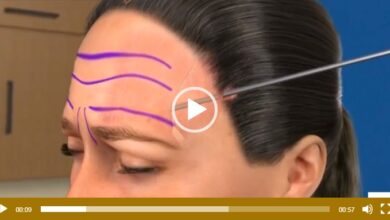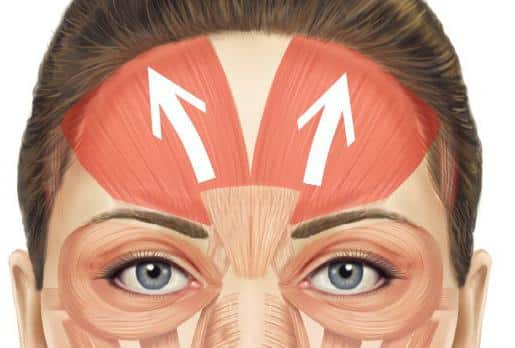How can you control the position of one eyebrow independently of the other?

Have you ever marveled at individuals who can raise one eyebrow while keeping the other perfectly still? The ability to move one eyebrow independently of the other is a captivating skill that adds a touch of expressiveness to facial expressions. In this comprehensive guide, we will explore the mechanics behind this intriguing ability and provide you with techniques to master the art of moving one eyebrow independently.
Understanding the muscles involved, practicing isolation exercises, and employing relaxation techniques are key elements to develop the coordination and control needed for this skill. Whether you’re interested in impressing your friends or enhancing your nonverbal communication repertoire, this article will provide you with valuable insights and practical advice to unlock the secrets of independent eyebrow movement.
Key Takeaways
- Eyebrow movement is controlled by muscles, such as the frontalis and orbicularis oculi, which allow for raising, lowering, and furrowing of the eyebrows.
- Moving one eyebrow independently requires isolating the muscle movements while keeping the other eyebrow still, and it can be developed through techniques like focus and relaxation, isolation exercises, mirror practice, mind-muscle connection, and gradual progression.
- Regular practice, relaxation techniques, observation of others, seeking professional guidance if needed, and recording progress are essential tips to enhance your practice sessions and optimize your progress.

Understanding Eyebrow Movement
Before we delve into the techniques, let’s first understand how eyebrow movement works. Eyebrows are composed of muscles that allow for various expressions, including raising, lowering, and furrowing. The primary muscles responsible for eyebrow movement are the frontalis and the orbicularis oculi.
The frontalis muscle, located in the forehead region, plays a crucial role in raising the eyebrows. On the other hand, the orbicularis oculi muscle encircles the eye socket and controls various eyelid movements, including eyebrow lowering.
1. Focus and Relaxation: Start by relaxing your face and focusing your attention on one eyebrow. It’s important to keep the other eyebrow relaxed and avoid unnecessary movement.
2. Isolation Exercises: Practice isolating the movement of each eyebrow by placing your fingers gently on your forehead, just above the eyebrow. Try to raise one eyebrow while preventing the other from moving. Repeat this exercise on both sides to develop independent control over each eyebrow.
3. Mirror Practice: Stand in front of a mirror and observe your eyebrows closely. Experiment with different facial expressions, focusing on moving one eyebrow while keeping the other stationary. This visual feedback will help you gauge your progress and make necessary adjustments.
4. Mind-Muscle Connection: Develop a strong mind-muscle connection by visualizing the movement of the specific eyebrow muscle you want to engage. Imagine the contraction and relaxation of the muscle, and gradually translate that visualization into actual eyebrow movement.
5. Gradual Progression: Moving one eyebrow independently can be challenging at first. Start with small movements and gradually increase the range of motion as you gain more control. Patience and consistent practice are key to mastering this skill.

Tips for Practicing Eyebrow Independence
To enhance your practice sessions and optimize your progress, consider the following tips:
Regular Practice: Dedicate regular practice sessions to develop the coordination and control needed to move one eyebrow independently. Consistency is essential in training your muscles and honing your skills.
Relaxation Techniques: Before practicing, perform relaxation exercises to release tension in your face and ensure a calm state of mind. Deep breathing and gentle stretching can help you achieve a relaxed and focused state.
Observation of Others: Observe individuals who can move their eyebrows independently and pay attention to their technique. While everyone’s anatomy and muscle control may differ, observing others can provide valuable insights and inspiration.
Seek Professional Guidance: If you’re struggling to achieve independent eyebrow movement despite consistent practice, consider consulting a facial movement specialist or a physical therapist. They can provide personalized guidance and exercises tailored to your specific needs.
Record Your Progress: Document your practice sessions by recording videos or taking photos. Reviewing your progress over time can boost motivation and help you identify areas for improvement.
Frequently Asked Questions
1. How long does it take to learn how to move one eyebrow independently?
Learning to move one eyebrow independently varies from person to person. The time it takes depends on various factors, including your natural muscle control, dedication to practice, and overall coordination. Some individuals may notice progress within a few weeks of consistent practice, while others may take several months. It’s important to be patient and remember that everyone learns at their own pace. With regular practice and a focused mindset, you can gradually develop the coordination and control needed to move one eyebrow independently.
2. Can anyone learn to move one eyebrow independently, or is it a genetic trait?
While some people may have a natural inclination or genetic predisposition for independent eyebrow movement, it is a skill that can be learned by most individuals. The ability to move one eyebrow independently is primarily based on muscle control and coordination, which can be developed through targeted practice. Everyone has varying degrees of muscle control, so while it may be easier for some individuals, with dedication and persistence, anyone can improve their ability to move one eyebrow independently.
3. Are there any risks or side effects associated with practicing eyebrow movement?
Practicing eyebrow movement itself does not pose any significant risks or side effects. However, it’s essential to practice in moderation and listen to your body. Overexerting the muscles in your forehead or eyes may cause temporary discomfort or fatigue. If you experience any pain or strain during practice, it’s advisable to take breaks and consult a healthcare professional if necessary. Additionally, ensure you practice in a well-lit environment to prevent unnecessary strain on your eyes.
4. Can moving one eyebrow independently cause wrinkles or other cosmetic concerns?
Regular practice of moving one eyebrow independently is unlikely to cause significant wrinkles or cosmetic concerns. Wrinkles typically develop due to the natural aging process, sun exposure, or repetitive facial movements over extended periods. However, it’s always a good idea to maintain a balanced approach to facial expressions and avoid excessive or repetitive movements that may contribute to the development of fine lines. If you have concerns about wrinkles or other cosmetic issues, it’s best to consult with a dermatologist or skincare professional.
5. Are there any specific exercises or stretches to improve independent eyebrow movement?
Yes, there are specific exercises and stretches that can help improve independent eyebrow movement. One exercise involves using your fingers to lightly hold down one eyebrow while attempting to raise the other. This helps isolate the muscles and strengthens their control. Another exercise involves furrowing both eyebrows, then gradually raising one while keeping the other lowered. Stretching the forehead muscles by raising both eyebrows as high as possible and then relaxing them can also be beneficial. Remember to perform these exercises gently and avoid straining the muscles or causing discomfort.
6. Can moving one eyebrow independently improve my overall facial expressions?
Yes, mastering the skill of moving one eyebrow independently can enhance your overall facial expressions. Your eyebrows play a significant role in conveying emotions and adding depth to your nonverbal communication. By gaining control over each eyebrow individually, you can create nuanced expressions that better reflect your thoughts and feelings. Whether you want to convey skepticism, surprise, or curiosity, the ability to move one eyebrow independently provides you with an additional tool to communicate effectively and express yourself more precisely.
7. Is there a specific age range in which it’s easier to learn independent eyebrow movement?
There is no specific age range in which it is easier to learn independent eyebrow movement. People of all ages can develop this skill with practice and dedication. While younger individuals may have more flexibility and natural muscle control, older individuals can still improve their coordination and master the art of moving one eyebrow independently. The key is to be patient, consistent, and embrace the learning process regardless of age.
8. Can practicing eyebrow movement have any positive effects on facial muscle control?
Yes, practicing eyebrow movement can have positive effects on facial muscle control beyond the ability to move one eyebrow independently. By engaging and exercising the muscles involved in eyebrow movement, you can enhance overall muscle tone and coordination in the facial region. This can contribute to improved facial expressiveness and control, allowing you to convey a wider range of emotions with greater precision. Additionally, practicing eyebrow movement can increase your awareness of facial muscles, leading to better control over other facial expressions and nonverbal cues.
9. Are there any alternative techniques or exercises to aid in learning independent eyebrow movement?
While the techniques mentioned earlier are effective for learning independent eyebrow movement, there are alternative exercises and techniques you can explore. One such technique involves using your palm or a soft cloth to apply gentle resistance while attempting to raise or lower each eyebrow individually. This added resistance can help you develop greater muscle control and strengthen the specific muscles involved. Additionally, some individuals find success in combining eyebrow movements with other facial exercises, such as puckering the lips or raising the cheekbones. Experimenting with different approaches can provide you with additional tools to enhance your learning experience.
10. Can independent eyebrow movement be used in professional settings or performances?
Yes, independent eyebrow movement can be used in various professional settings or performances to add emphasis and expressiveness to your communication. In acting, for example, the ability to move one eyebrow independently allows actors to portray specific characters with distinctive facial expressions. In public speaking or presentations, it can help you engage and captivate your audience by conveying subtle emotions and reinforcing key points. However, it’s important to use independent eyebrow movement appropriately and in moderation, ensuring that it aligns with the context and tone of your communication. Like any nonverbal tool, it should be used to enhance your message effectively and not overshadow the content itself.
Conclusion
Mastering the art of moving one eyebrow independently is a fascinating journey that requires dedication and practice. By understanding the mechanics of eyebrow movement, practicing targeted exercises, and incorporating relaxation techniques, you can gradually develop the coordination and control needed to perform this captivating skill. Remember, progress may vary from person to person, so be patient with yourself and embrace your unique journey.
Moving one eyebrow independently allows you to add a touch of expressiveness and uniqueness to your facial expressions. Whether you use it to convey skepticism, surprise, or curiosity, this skill can enhance your nonverbal communication and make your interactions more engaging. So, start practicing, be persistent, and enjoy the process of discovering the fascinating world of independent eyebrow movement. With time and effort, you’ll unlock a captivating ability that sets you apart and adds an extra layer of expressiveness to your communication.








